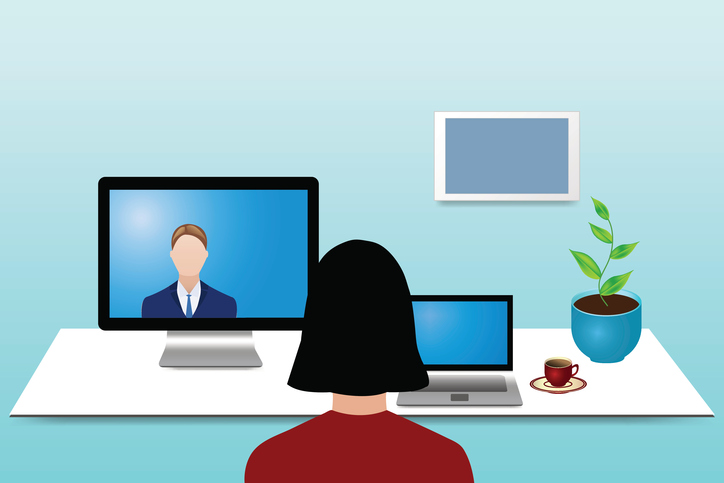
It is circa 2020 and we are in the middle of a declared pandemic and a nation-wide lockdown. In the current extraordinary circumstances, university students have been simply asked to concentrate on their studies, and now, be ready to appear for open book examinations in several leading universities. Of course, it is presumed that the poorest of the poor students – those enrolled in the open and distance learning (ODL) mode of universities – are equipped to meet the requirements of such examinations. Even when students of premier regular-mode colleges like Lady Sri Ram College, University of Delhi, have complained of problems like interrupted internet service and limited access to electronic devices, it is simply presumed that all ODL mode students have access to internet, smartphones and laptops – period. For university bureaucracies, it is a done thing that all students have a home environment conducive for self-study and can take an open book examination from home. So what if the space that many ODL mode students call home is a 8×8 ft. room, and many who live in urban slums are actually confined to a space of just 42 sq. ft., which is even less than the 96 sq. ft. recommended for a prisoner in jail! On normal days, these students go to public libraries and reading halls to steal a few hours of study.
In the midst of all the socio-economic and biological crises, it is assumed that an average student is still in the mental or physical frame to pursue studies. Insulated themselves from the pervasive social chaos around, university bureaucrats and many pliant teachers find it easy to believe that continuing education in a situation like this is the priority of an average student. Ultimately, university administrations have simply asked students to appear for an open book examination. Books are something all university students have – period! Contrary to this, of course, ODL mode students of the final year in Delhi University (DU) are still awaiting study material for several papers for which they are expected to take open book examinations. And if we turn to the material that DU has provided them, well, this is what we find. Below is a pre-analytical placement of some details taken from the study material prescribed to students of Delhi University School of Open Learning (DU SOL) – the list does not claim to be exhaustive and is simply illustrative:
1)In the study material provided for the paper “Western Political Thought” of the B.A. Political Science (Hons) course, the name of the German philosopher Karl Marx was misspelled as Marks!
2)In the study material for the paper “Political Process in India” that was assigned to B.A. (Hons.) Political Science, serious discrepancies were visible in terms of faulty pagination, faulty chapterization, provision of factually wrong information, faulty translation of Hindi study material, lack of information on the author who compiled the material, and of course, repetitive grammatical errors. On p.28-29 of this paper’s study material, the following passage is worth noting (errors are highlighted):
It does not allow discrimination on the hands of state [sic!] on the basis of people’s religious beliefs…Sometimes, the ides [sic!] of secularism practised even go beyond the constitutional vision which creates tensions…Thomas Pantham…states that…The word secularism was not included in the Indian Constitution, neither did the founder [sic] fathers explicitly define the term…
3)Likewise on p.40 in the same paper’s study material, we find the following error in spelling: ‘Jawahar Lal [sic] Nehru and Subhas Chandra Boss [sic!], the two stalwarts…’
4) In another paper, “Constitutional Government and Democracy in India” of the B.A. (Hons) Political Science Course, on p.3 of the study material we come across the following phrase “devide [sic!] and rule”.
5) In the same paper, “Constitutional Government and Democracy in India”, at p.35 we are told that “the Supreme Court consists of a Chief Justice and not more than 25 other judges [sic! – There are currently 34 judges in the Supreme Court].
6) Large portions of the same paper’s study material seem to have been cut and pasted from other sources. The plagiarism is reflected in the underlines made by the so-called author of the material, which have not been removed!
7) Similarly, in the Hindi-medium study material uploaded on the SOL website (E-Pustakdwar School of Open Learning) for the B.A. Program paper “History of India: from the Earliest Time to 300 CE”, the Hindi translation of the paper’s title is “Bharat ka Itihaas Jald se Jald toc. 300 CE Tak” [sic! – for non-Hindi linguistic groups, I would like to explain that the Hindi translation provided by SOL, when translated back into English, simply means ‘History of India Quickly’!]. In the same material, the phrase Sangam Age (referring to the period from the 6th century BCE to c. 3rd century CE) has been translated as Sangam Ayu [sic! – a proper translation would have been Sangam Kaal because the word Ayu refers to the age of a person, not a time period!].
8) In the Hindi study material prepared for the Ability Enhancement Compulsory Course (Environmental Science), the title of the paper in Hindi is wrongly translated as “Paryavaran Adhyayan” meaning “Environmental Studies”, not Environmental Science; reflecting that the author/translator is clearly unaware of the differences in the two disciplinary approaches. The credentials, i.e. department and course, of the author of this study material are not known. Moreover, the study material barely covers the prescribed UGC syllabus for Environmental Science, and is instead randomly put together using different sources.
9) No attention has been paid to the needs of Persons with Disabilities (PwD). The study material posted on the website is not disability compatible and cannot be accessed. Books in braille are also not available.
Apart from such material are the woes of learning and completing university syllabi in less than 20 sessions of personal contact program (PCP)! In DU SOL, even the 20 PCP classes are not provided. Ironically, whilst their academic session commences in the month of July, students are kept waiting for the PCP sessions, which are barely rolled out before the May-June examinations. In fact, for the vast majority of SOL students, there have been no classes even before the lockdown. While they cope with university syllabi in just 20 or less classes of PCP, students with better schooling who are enrolled in regular colleges are offered 180 days of regular classroom teaching.
Most of the students in ODL mode are from socially most vulnerable and economically disadvantaged backgrounds. For instance, in IGNOU there has been a continuous rise in the number of SC and ST students who enroll with the University. Between 2010 and 2018, while the overall increase in the enrollment of students in IGNOU was 93.6%, the number of SC students who enrolled rose by 248%, while the number of ST students grew by 172%. Similarly, majority of the students in Delhi University’s SOL centres are SC/ST/OBC/Minority category students. While there are many university democrats who speak vocally about the fund-crunch in regular mode colleges and premium institutions, the lack of UGC funding for ODL institutions is not an issue that gains much traction. DU SOL might be the biggest model of proxy private education under the garb of a government institution. Shockingly, since July 1997, SOL has received no financial assistance or maintenance grant from any government institution – a fact that university democrats simply elide. With zero financial contribution from UGC, the large establishment of SOL runs on the tuition fees collected from the poorest of poor students. Even the salaries and pensions of SOL directors, principals, teachers and administrative staff are paid through the money collected from students.
For a long time many have ignored these modern-day Eklavyas. It is another story that in recent years these most discriminated students of the university system have organized themselves in a unique, radical movement against the ills of distance education. Their consistent pressure and struggles have compelled the Ministry of Human Resources Development (MHRD) and the UGC to release guidelines for ODL institutions. As a consequence, the UGC issued its Open and Distance Learning Regulations, 2017. Needless to say, if the provisions of these UGC Regulations were actually enforced then majority of ODL institutions in the country would close shop!
The efforts of struggling ODL mode students, nonetheless, continue to be ignored by majority of educationalists. For many people in the university system, these ODL mode students are simply children of car-cleaners, domestic workers, plumbers, sanitation workers, construction labourers, hawkers, and other such service providers. This is true – these are precisely the people whose children knock on the gates of universities with aspirations to change their life conditions through higher education. However, the poorest of the poor students, who most need face-to-face teaching and access to the best educational resources so as to overcome their inherited disadvantages in schooling, home environment, etc., are basically shown the door and pushed down the path of self-study when they seek entry into higher education. Meanwhile, many conveniently continue to buy into the misconception that these students have supposedly opted for the ODL mode rather than regular college. In reality, these students want to study in the regular mode. It is their substandard schooling in run-down government schools and B-grade private schools as well as the shortage of seats in regular colleges that pushes them into the substandard ODL mode offered by universities.
With regard to the plight of scores of ODL mode students, perhaps the apathy of many people who are part of the university system stems from the engrained logic that if the poorest of the poor were to study and move up the social ladder, who would do all of society’s mundane, stigmatised work? So for many this stark educational apartheid will not have any signaling effect.[1] With this I rest my case.
[1] For greater engagement with the issue of the crisis in universities and its interaction with the long-standing educational apartheid, see Maya John (2020), “Fears and furies of online (mis)education – lockdown and beyond”, 22 May, https://kafila.online/2020/05/22/fears-and-furies-of-online-miseducation-lockdown-and-beyond-maya-john/
Maya John teaches in University of Delhi and has been associated with the Left movement for the past two decades.
SIGN UP FOR COUNTERCURRENTS DAILY NEWS LETTER















































